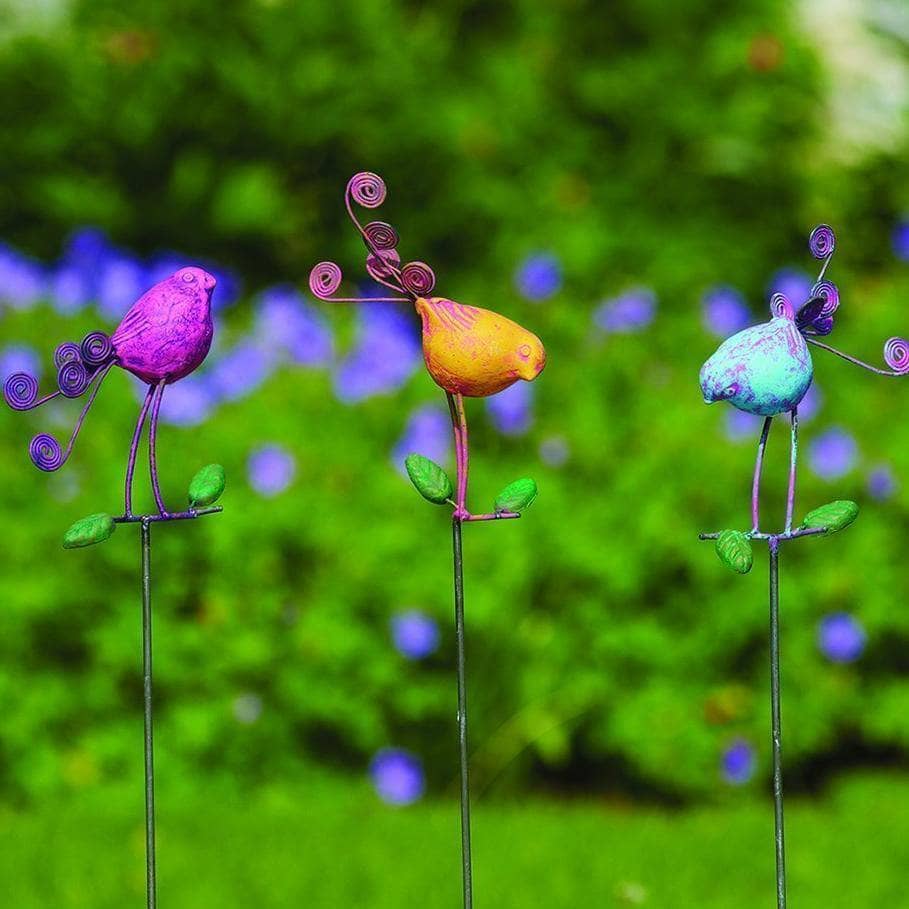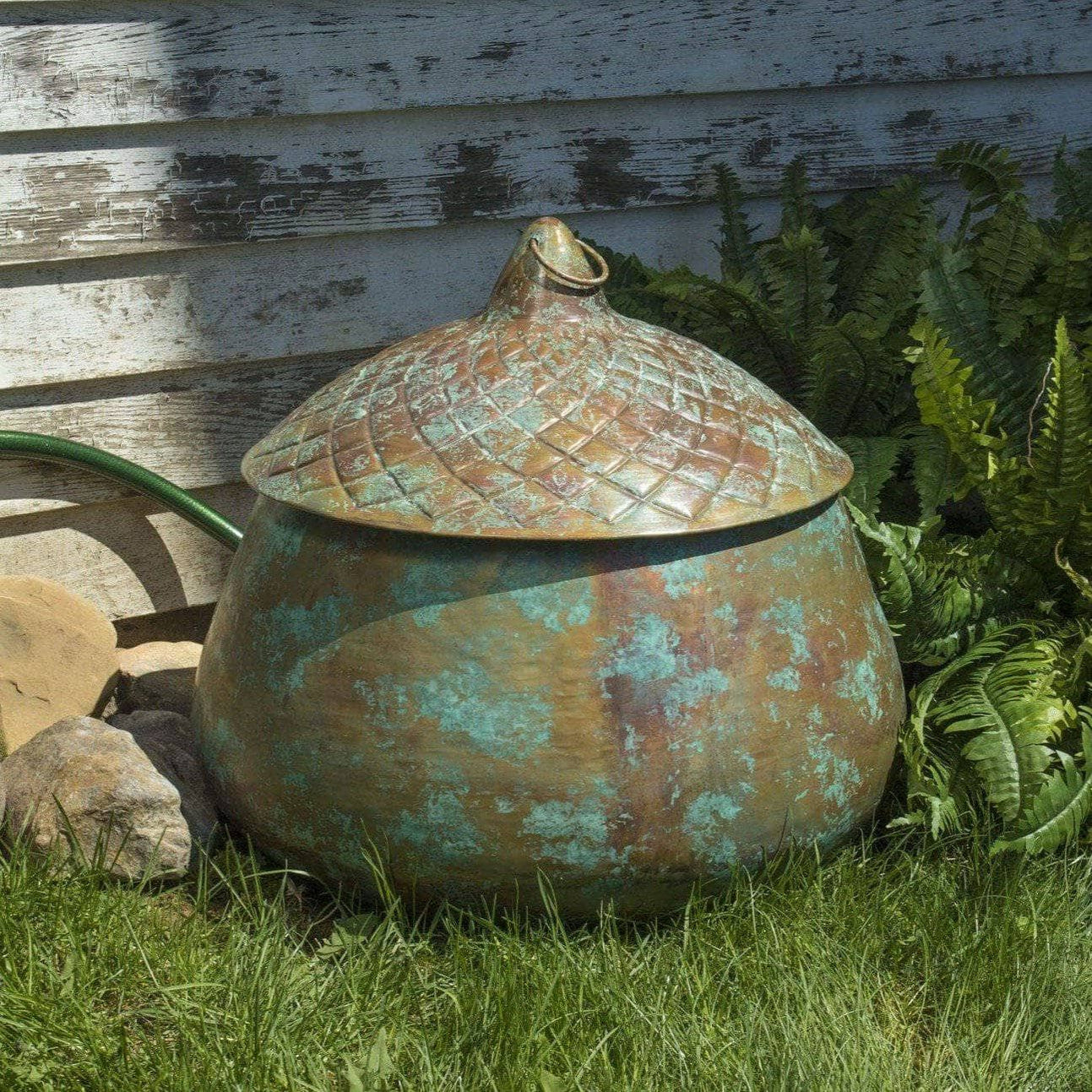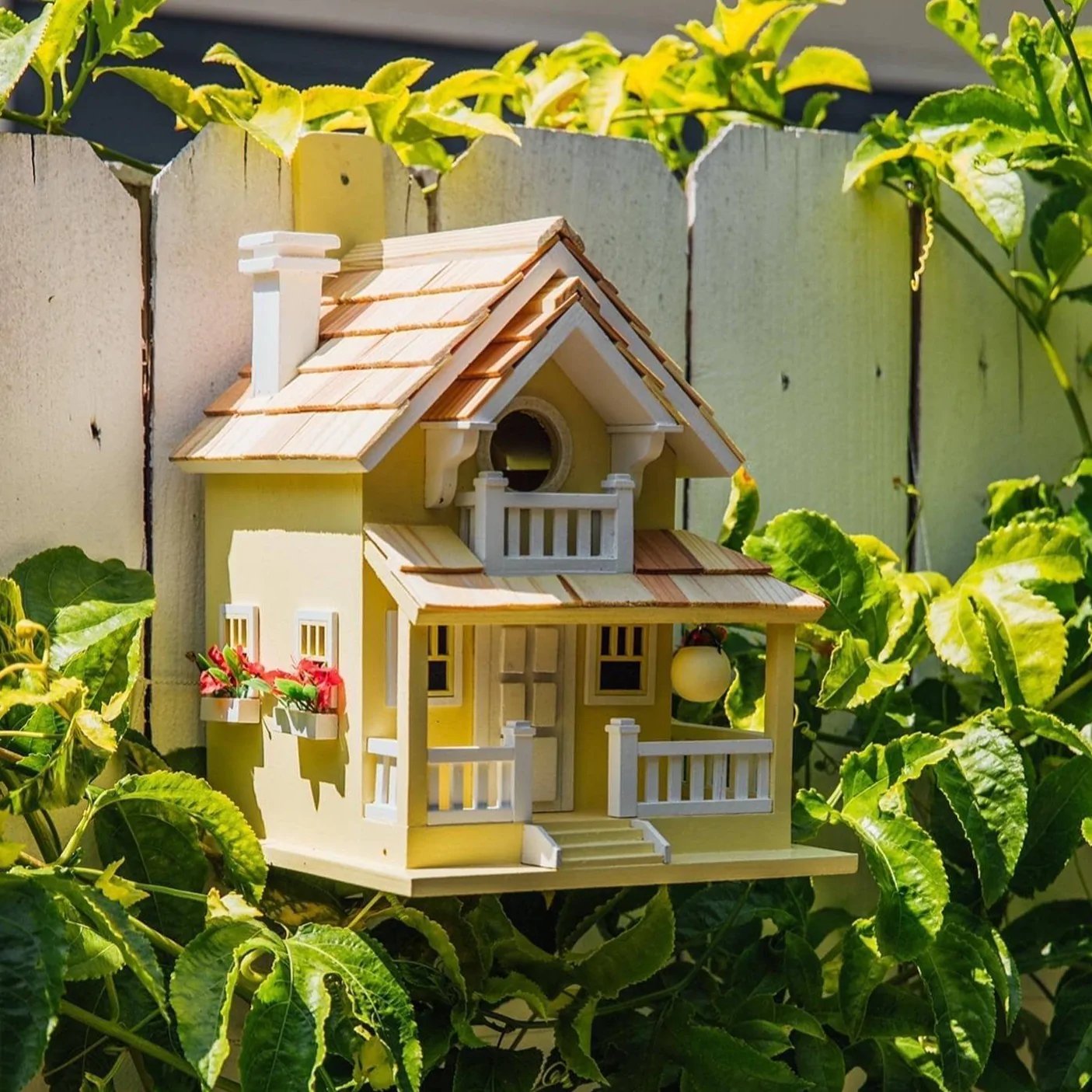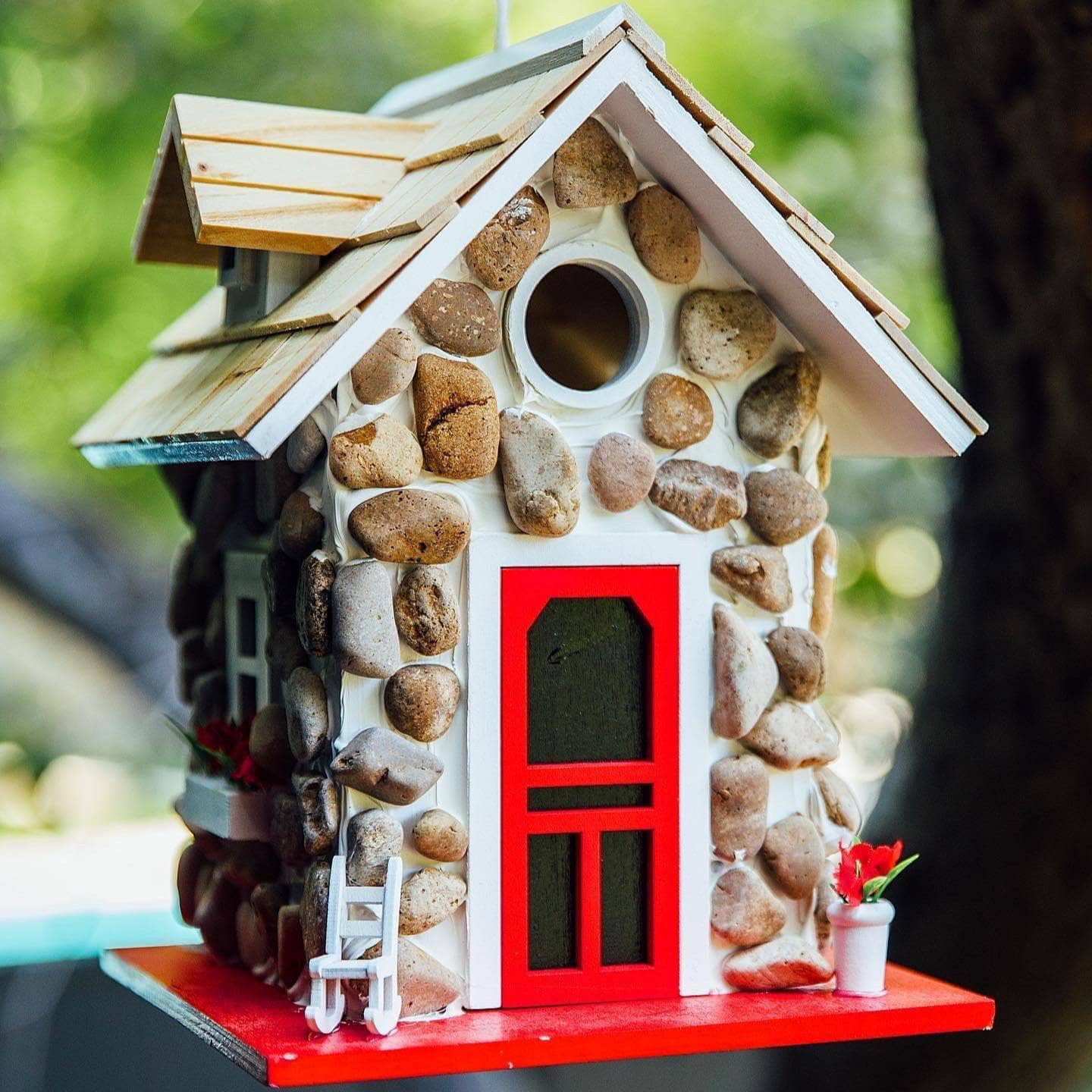
The Best Recipe For Hummingbird Nectar - Our Tips
Share
Hummingbirds are tiny, majestic creatures that any gardener is lucky to find buzzing around their yard. While they are known for eating a variety of different things, one of the most popular meals of these birds is the fresh nectar from flowers throughout your garden.
The sucrose content of the natural nectar-producing flowers can be mimicked with a traditional hummingbird nectar recipe, which is easy enough to make at home. Providing your hummingbirds with a readily available source of nectar in a feeder will enable them to have healthy, nutritious, and delicious meals as they please.
Why You Should Make DIY Hummingbird Food
Observing hummingbirds feeding in your yard brings so much joy to so many people. And hummingbird nectar will attract more of these fascinating creatures to your yard.
Thankfully, making hummingbird nectar at home is simple enough. It only requires minimal ingredients and steps. Placed into a hummingbird feeder, it won't be long before you are providing healthy meals to the hummingbirds of your neighborhood. If you don't have a feeder, you can always use your bird bath as an alternative.

How to Make Hummingbird Nectar
Finding a homemade hummingbird food recipe is easy enough as it typically requires sugar and water - that's it!
Here's how to start attracting hummingbirds to your yard with your very own homemade hummingbird nectar.
What You'll Need
Natural flower nectar is essentially a sugar water substance. While some recipes call for red food dye, we recommend against it (more on that later).
But, before we go any further, let's first take a look at what ingredients you'll need to make your homemade nectar:
- Water
- White granulated sugar
Water
Starting with water, many people are curious if tap water is okay for feeding hummingbirds. Thankfully, since you will be boiling the water anyway, using tap water is completely fine. Any impurities that may be harmful to hummingbirds will be boiled out in the process.
Sugar
The best type of sugar to use for hummingbird nectar is regular table sugar. Avoid using raw, unprocessed sugars, honey, brown sugar, organic sugar, or corn syrup. Filling feeders with nectars made from these types of sugars can harm the birds. Beet sugar is another option, although table sugar tends to be the most ideal.
Step-by-Step
Now that you know what ingredients you'll need, here are the step-by-step instructions for this homemade hummingbird food recipe.
1. Boil Water
First, you are going to bring your water to a roaring boil.
2. Remove From Heat
Once your water is steadily boiling, you will need to remove it from the heat.
3. Add Sugar
After your boiling water is removed from the heat, you will add in your white cane sugar. Stir the mixture until the sugar dissolves completely.
4. Let Mixture Cool
Once the sugar is completed mixed in, you'll still have very hot water. Allow your water to cool completely.
5. Fill Your Feeder
When you notice that your hummingbird food has cooled, you can fill your feeder and put it out for your birds to enjoy!
Don't have the time or energy to whip up your own nectar? We sell it in our shop!
Hummingbird Feeder Tips & Tricks
Here are a few tips and tricks when it comes to handling your hummingbird feeder and nectar.

Storing Nectar
If you have extra hummingbird nectar once your feeder is already filled, you can store it in your refrigerator for up to one week. After that, it will begin to spoil and will be no good for the hummingbirds of your yard.
It's best recommended to do your best to make the exact measurements for your feeder so that you don't have any of your sugar water going to waste.
Changing Out Food
Changing out the food in your hummingbird feeder depends on a few things, such as the design of your feeder and the weather. You should do your best to change out the nectar frequently, ranging from every three to five days. Remember that your own nectar can spoil, so more frequent changes are always welcomed.
Cleaning Your Feeder
Hummingbird feeders can become breeding grounds for bacteria, which is why it's always essential to make sure your feeder is clean. Here's a thorough explanation of how to keep your feeder clean.
Materials Needed
The simplest method for cleaning your hummingbird feeder involves a brush, dish soap, and hot water.
- Dish brushes
- Dish soap
- Hot water
How To Clean Your Feeder
Using the brushes, you can easily scrub your hummingbird feeder in your sink. The use of mild dish soap will help eliminate any extra sticky substances from the remaining nectar in the feeder.
Always be sure to clean out all soap residue. Failure to do so could alter the flavor of your nectar, discouraging hummingbirds from feeding at your location.
If you'd instead try something other than dish soap, you can opt for a vinegar solution. Create a mixture that is 4:1 water to vinegar. As with the other solution, be sure to rinse the vinegar out of the feeder well to deter any birds from feedings in the future.
If You See Mold
If you notice mold in your feeders, it means that you need to be changing out your nectar and cleaning your feeder more frequently. The best way to stay on top of it is to clean out your feeder every time you change out your nectar.
For mold that's sticking onto the feeder, you can soak it in a mild bleach and water solution at a 10:1 ratio for one to two hours. This soaking method will kill any bacteria that can be detrimental to hummingbirds' health, although discoloration might still be present. Use a scrub brush to eliminate other signs of mold after your bleach soak.
Another option is to use hydrogen peroxide to clean feeders showing signs of mold.
Placing Your Feeder
Don't let their size fool you. Hummingbirds can be both shy and territorial little birds. Keeping this in mind, you'll want to place your feeder in a low-activity area in your yard. Placing your feeder next to trees is ideal as they like to perch on nearby branches.
There's also some safety and sanitation concerns to consider when placing a hummingbird feeder. You can learn more about them in our exhaustive guide to hanging a hummingbird feeder.
How to Attract Hummingbirds
If you enjoy watching the little bird flutter around your yard, it's essential to know how and where to find them. While they can be found across the United States, they will leave the northern states for winter for more southern parts of the globe. Central America becomes a popular location for the small bird once the winter months have begun.
Plants
Thankfully, there are different techniques you can use to help attract hummingbirds to your outdoor space. Certain nectar-producing flowers are known for being a favorite to the tiny bird. Plants like the trumpet honeysuckle, bee balm, or bleeding hearts are sure to get hummingbird's heart beats up and into your garden.
Hummingbird Feeders
You've got the hummingbird nectar. Now all you need is a proper hummingbird feeder to provide it to the little birds of your yard. There are plenty of different design styles out there, so it's easy to find something that matches your aesthetic.
What NOT to Use
It's essential to preserve the nutritional value of real food for hummingbirds and not just make extra sugar water for these birds. Hummingbirds love a good nectar recipe. Just remember to avoid using any of the following ingredients.
Red Dye
It was once believed that hummingbirds were drawn to red flowers. There is a connection between the high metabolism of these birds and the high levels of nectar often found in these nectar-producing flowers. The metabolism of these birds is so high they consume 1.5 to three times their body weight in food per day. As such, people began dying their refined white sugar mixtures with red food coloring.
Remember that natural nectar is, in fact, colorless. So, while they might be attracted to bright colors, you can incorporate the color into the feeders rather than using red dyes in the sugar water. Opt for a red feeder or one with feeding ports that are brighter.
Honey
Honey, although sweet, is yet another ingredient that can be harmful to the small buzzing bird. Always opt for table sugar rather than raw sugars like honey.
Artificial Sweeteners
Always keep it natural when it comes to feeding your hummingbirds. Artificial sweeteners can be harmful to hummingbirds, so always steer clear of these types of ingredients.
How to Fill Hummingbird Feeders

Now that you know all there is to know about making hummingbird nectar, it's time to learn about how to fill your hummingbird feeder with your homemade hummingbird food recipe.
Types of Feeders
First of all, it's essential to understand that several different types of hummingbird feeders are on the market. While all of them should come apart quickly for cleanings and refills, it's crucial to identify that there may be differences in the processes for each style.
Some of the common types of hummingbird feeders you will see include:
- Basic feeders
- Unique feeders
- Window feeders
- Tray feeders
- Decorative feeders
One of the more popular features found in feeders today has a built-in ant moat, preventing the pesky bugs from polluting the sugar and keeping your feeders clean longer.
Related: How to Choose the Best Bird Feeder For Your Yard or Garden
Size of Feeders
Filling your hummingbird feeder will also be dependent on the size of your feeder. A larger feeder does not necessarily attract hummingbirds in more significant numbers. That being said, if you live in an area that has a lot of hummingbirds, having a larger feeder may be beneficial for your sightings.
Smaller feeders also do a great job attracting hummingbirds. Ideally, you'll want to be filling your feeder with new hummingbird nectar every three to five days. You'll want to figure out the proper size so that it is nearly empty during this time. Otherwise, you'll be wasting nectar.
Keeping Nectar Fresh
To attract hummingbirds, you need to have fresh nectar readily available. If the birds find that your nectar recipe has spoiled, they will quickly move on to a new place to dine.
If you have a homemade nectar recipe you like, don't be afraid to try it out. Always be sure you are keeping it fresh. Living in regions with especially hot weather will also mean you will have to change your nectar more frequently.
Where to Buy Hummingbird Feeders
Hummingbird feeders come in all shapes and sizes, with varying features. For shoppers, this means finding exactly what you are looking for isn't always the simplest task. Here are a few ideas on where to buy hummingbird feeders to help get you started building the hummingbird garden of your dreams.
Secondhand Shops
Check out your local secondhand shops to see what type of crafty hummingbird feeders you can find, if any. Since you're not guaranteed to find what you are looking for, it's worth going into this shopping with an open mind. You might be able to make a hummingbird feeder out of something unique you find here.
Facebook Marketplace
You can also look at Facebook Marketplace to see if anyone in your area is looking to get rid of a hummingbird feeder. You might even get lucky and find one in the free section. One gardener's trash is another gardener's treasure!
Happy Gardens Store
Last but definitely not least, if you aren't willing to compromise quality while searching for handcrafted beauties, the Happy Gardens Store is going to be your best bet. Peruse our hummingbird feeder collections to find items designed by artists and hand-selected by the Happy Gardens team.
We're always happy to help spark some creativity and inspiration since making your backyard dreams come true is what we live for.
About Happy Gardens
The Happy Gardens online collection is the best place to start if you're searching for thoughtful and unique garden pieces and merchandise, great for all outdoor spaces. Whether you've been endlessly searching for that perfect hummingbird feeder, charming rain chain, or beautifully crafted birdhouse, you'll quickly see that Happy Gardens is the best place to shop. You can rest assured that each product you'll come across on our site has been handcrafted with love, with none other than your happiness in mind.
All of our beloved products are top-rated and come from a wide variety of special collections. Some of our personal favorites include decor pieces such as our eye-catching spinners, artistic rain gauges, unique garden ornaments and statues, and so much more.
Got some fellow garden enthusiast in your life? Check out our brand new line of merchandise, with fun and exciting gifts readily available year-round. Find the best coffee mugs, wine glasses, and tote bags for your loved ones, perfect for any occasion.
If you're looking to stay up to date on the latest and greatest happenings at Happy Gardens, simply join our mailing list by entering your name & email address. Get ready for fun and countless tips and tricks to start flooding your newsfeed. Follow us on Instagram and Facebook for even more garden inspiration!
So, how do you pick the perfect hummingbird feeder for your yard? Try asking one of us via chat. After all, here at Happy Gardens, we're happy to help!










